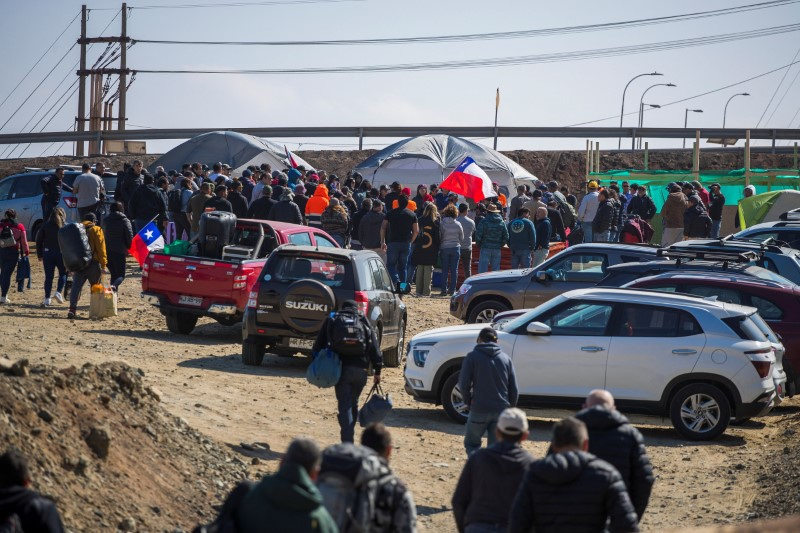By Fabian Cambero and Alexander Villegas
SANTIAGO (Reuters) -A powerful union behind a strike at BHP’s massive Escondida mine, which produced almost 5% of world output by 2023, wants to cut output at the site as it pushes for a bigger share of profits.
The union, which launched a strike on Tuesday, has previously paralyzed the world’s largest copper mine and sent global copper prices soaring. This time, much depends on how quickly negotiations can break the impasse.
“(Escondida’s union) has a history of tough negotiations, without fear of striking to achieve their goals,” said Andres Gonzalez, head of Plusmining consultancy in Santiago.
When the union held a 44-day strike in 2017, global copper prices rose when BHP declared ‘force majeure’ two days after the strike, meaning it could not fulfill its contracts.
Also in 2006, the company had to declare force majeure after a 26-day strike, and in 2011 the union halted its activities for fourteen days. The union went on a hunger strike in 2015. In 2021, a strike was barely avoided despite a labor dispute.
Three elements make the union particularly strong, Gonzalez said. The union has about 2,400 members, about 61% of Escondida’s workforce. The country has strong financial reserves to care for workers during strikes. And finally, Chilean law does not allow the company to replace striking workers.
“The company will be forced to shut down a significant part of its operations, which apparently gives the union enormous bargaining power,” Gonzalez added.
Besides comprising the majority of the total workforce, the Sindicato Nro. 1 (Union No. 1) makes up 98% of Escondida’s frontline workforce, including machine operators, drivers, technicians and maintenance personnel – all essential to maintaining production.
Patricio Tapia, president of the Escondida union since 2016 and part of the union leadership since 2008, previously told Reuters that the union has four times more resources than in 2017, as well as credits to meet workers’ needs during the strike.
The 2017 strike ended when the union used local law to freeze the expired contract and then negotiated for another 18 months.
COPPER MARKET QUIET FOR NOW
BHP said on Tuesday evening that the union had rejected its latest invitation to resume talks, although the workers’ group has said it is ready to resume dialogue.
The company said the contingency plan calls for allowing non-union employees to continue working, and that operations continued, although it did not specify to what extent.
“The union (Escondida) may be small compared to others, but it is more than 2,000 people who control the largest copper mine in the world,” said Gustavo Lagos, an analyst at the mining center of Chile’s Catholic University.
A smaller strike at Lundin’s Caserones mine, also in Chile, is less likely to affect production as only 30% of workers there are members of the mine’s union.
Copper prices have yet to see a major impact from the current strike, with analysts pointing to weak demand from top copper consumer China and hoping for a quick resolution. However, that could change if the strike action hardens.

A key sticking point is a union request to pay 1% of the mine’s shareholder dividend to employees, which analysts estimate would be about $35,000. The union also demanded this in 2021, but was able to reach an agreement that included a bonus of about $23,000 and almost $4,000 in overtime bonuses.
BHP has offered employees a bonus of $28,900 this time.


